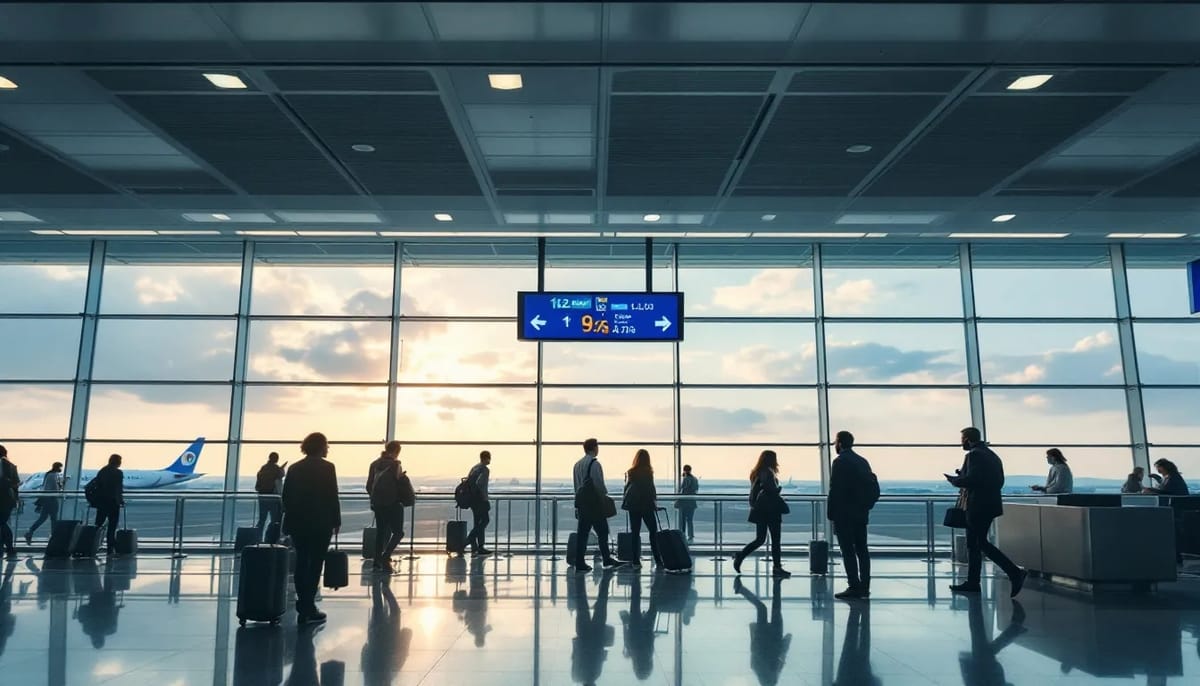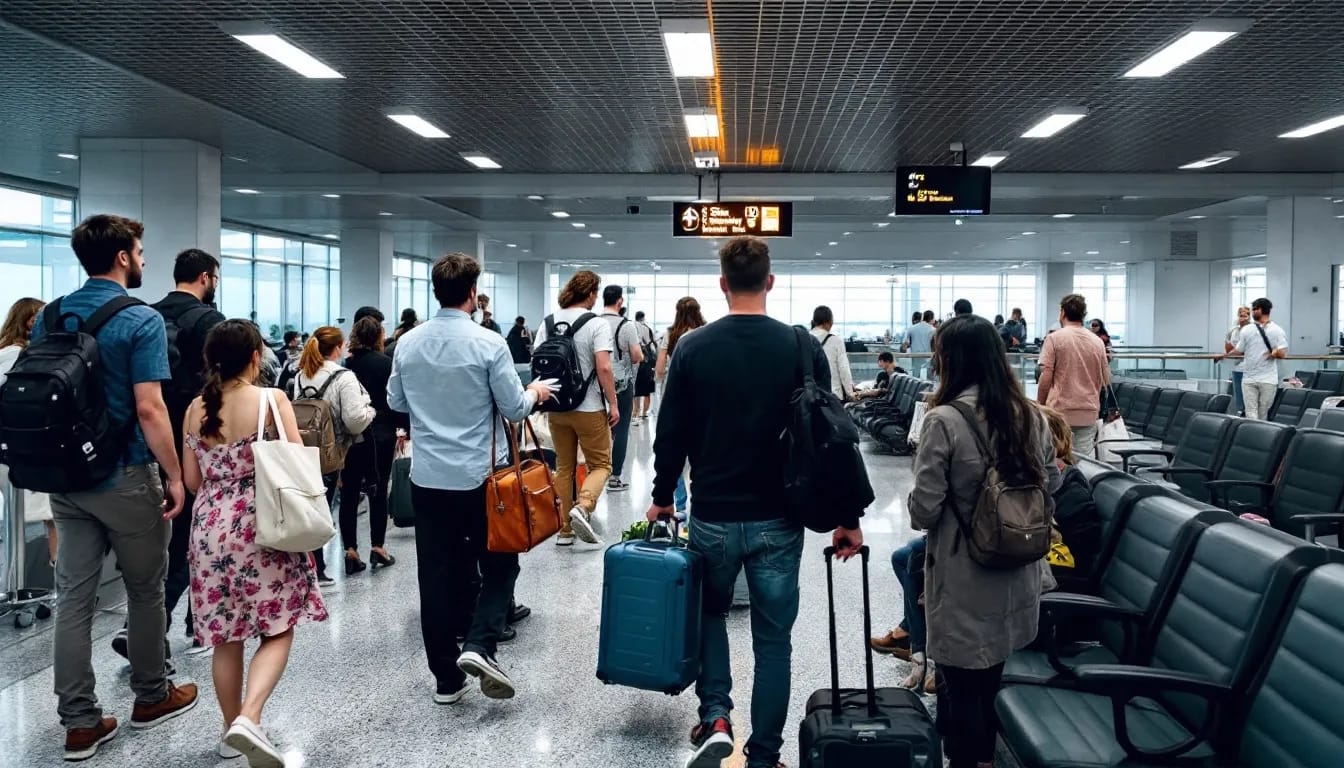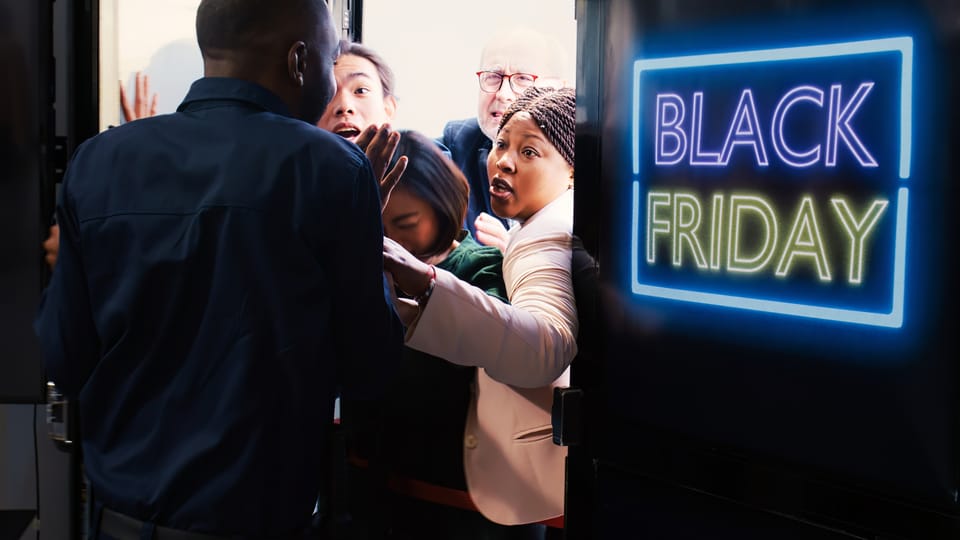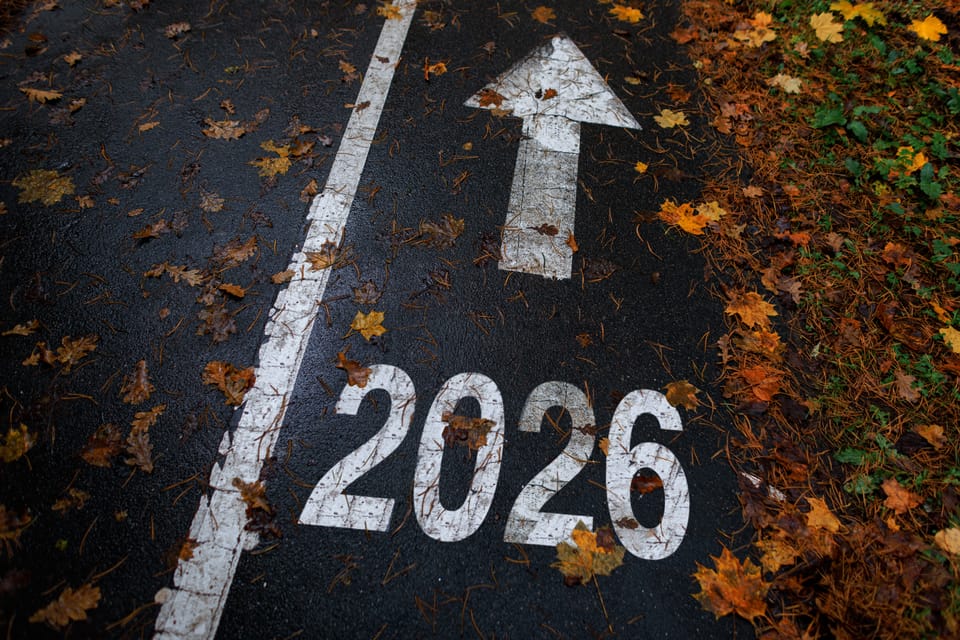Stuck at a Non-Gateway Hub? Here's Your UpNonStop Playbook
Locked in Philly or a non-gateway city? Don’t chase nonstop flights - chase value • The best redemptions often start elsewhere • Use positioning flights to JFK, BOS, or IAD to unlock Qsuites, ANA Business, or Emirates First for fewer miles • Your airport’s the on-ramp, not the destination.


If You Only Had 60 Seconds to Read This Article (Click Here)
Living in places like Philadelphia, Charlotte, Denver, Fargo, Tulsa, or Boise doesn’t doom you to economy seats. The trick is accepting that your hometown runway is only step one, then using positioning flights to grab the best premium-cabin awards from larger gateways.
Mindset first: flexibility beats convenience. Gateway flyers fight each other for scarce nonstop awards; you can choose any routing that works. For very small airports, embrace the “double hop”—a short regional jump (FAR-MSP) plus a cheap domestic hop (MSP-ORD) before the long-haul, ideally booked on flexible carriers such as Southwest. Medium airports usually need only one hop: e.g., $100 PHL-JFK, then 70k Avios for Qatar Qsuites to Doha, instead of 300 k miles from Philly nonstop.
Think of nearby gateways—JFK, EWR, IAD, ORD, LAX—as extensions of home. Amtrak, buses, or one-way car rentals often beat a same-day connection, so build an overnight buffer when weather looks dicey.
Pick programs with outsized value from big hubs: 85k ANA miles round-trip business US-Japan; 87 k LifeMiles for Lufthansa First ORD-FRA; Aeroplan’s 5k-mile stopovers; and BA Avios for 7.5k domestic hops. Avoid burning AA or Alaska miles on expensive direct flights from small markets—save them for partners.
Layer bookings: lock the long-haul award first, add positioning flights later, and keep tickets separate so schedule changes don’t unravel everything. Always have a Plan B—Southwest seats, train tickets, or hotel points—to survive irregular operations.
Essential tools: Seats.aero for alerts, ExpertFlyer for seat releases, Great Circle Mapper for Avios band math, and credit cards that feed transferable points into multiple programs.
Bottom line: your small or mid-sized airport isn’t a handicap; it’s a license to be creative. Master positioning, leverage flexible currencies, and you’ll trade “nowhere-ville” for lie-flat luxury on every trip.
Everything else you need to know is just below 👇🏻
Living outside marquee international mega-hubs such as New York-JFK, Los Angeles (LAX), Miami (MIA), or Chicago (ORD) does not condemn you to cramped economy cabins or overpriced cash tickets. In fact, starting from mid-sized airports like Philadelphia (PHL), Charlotte (CLT), Denver (DEN), Austin (AUS), or truly small fields like Fargo (FAR), Tulsa (TUL), Boise (BOI), Greenville-Spartanburg (GSP) can increase your odds of landing elusive premium-cabin award seats and lower the overall mileage bill—if you learn to play the positioning game.
This expanded guide deep-dives into the mindset, tools, and step-by-step tactics that turn a so-called “station-off-the-map” into your launchpad for lie-flat bliss. We will cover:
- The psychological edge of being a non-gateway flyer
- Concrete double- and single-hop positioning strategies
- Alliance-by-alliance sweet spots that begin at gateway airports but end in your smaller hometown
- The nitty-gritty of credit-card transfer partners, built-in back-ups, and real-world case studies
- ProTips—sprinkled liberally—for every stage of the booking journey (including some advanced ProTips below)
Understanding Your Non-Gateway Advantage
Mindset First, Routes Second
Most travelers anchored to a big hub instinctively filter for nonstop business class on their preferred airline. That singular criterion slams the door on 90 % of award possibilities. You, the non-gateway adventurer, already know a stop is inevitable. That mental freedom makes you open to quirky routings, mixed cabins for short segments, and alternative alliance partners—exactly where the richest award value hides.
Each additional variable you can flex—date, cabin, alliance, intermediate airport—multiplies your odds of success. Think combinatorial math: five flexible levers can yield hundreds of itinerary permutations compared with a nonstop-or-nothing stance.
The Competition Curve
Search ExpertFlyer or a program like Seats.aero on the release day for Lufthansa First Class. ORD, JFK, and LAX waitlists often fill within minutes. Meanwhile, IAD, YUL, or even smaller European outstations can stay open for days. By funneling yourself to the slightly less obvious hubs, you sidestep the pack.

Strategy for Very Small Airports → The Double-Hop Game
Travelers from airports with minimal mainline service—think Fargo, Tulsa, Bozeman, Knoxville, or Wilmington-ILM—must chain two positioning flights before the long haul. Far from painful, this double-hop can be engineered for maximum redundancy and minimum stress.
What Exactly Is “Double Positioning”?
- Micro Leg – 100–300 mi on a regional jet or turboprop into a fortress hub of a U.S. legacy carrier (FAR → MSP on Delta; BOI → SEA on Alaska).
- Macro Domestic Leg – A second flight, often on a different airline, from that hub to whichever U.S. gateway offers award space (MSP → ORD; SEA → SFO).
- Intercontinental Launch – The premium cabin you actually care about (ORD → FRA in Lufthansa First; SFO → NRT in ANA The Room).
Positioning leg #2 can be booked with cash, miles, or Southwest’s fully refundable Wanna Get Away Plus fares, giving you a built-in cancel button should your anchor award change.
Case Study – Fargo to Frankfurt in Style
- Step 1: FAR–MSP on Delta SkyMiles for 4,500 miles or a $59 cash sale.
- Step 2: MSP–ORD on Southwest; book a refundable fare for ~$110.
- Step 3: Lufthansa First ORD–FRA on Avianca LifeMiles—87,000 miles + ~$75 in taxes.
Total travel time ~11 hours gate to gate. Delta and Southwest each provide two free checked bags (Southwest always, Delta with co-branded card), ideal if you are lugging winter coats.
Two free bags, free same-day changes, full mileage refunds on cancellation, and dozens of intra-U.S. tag flights that run even when United or American cancel during IRROPS.
Building Slack Into Tight Itineraries
Double positioners should pre-overnight at the U.S. gateway at least once in winter months. Hotel Tonight points, Hyatt Cat 1-4 free-night certs, or even the Chase Sapphire’s $50 statement credit on Hotels.com can erase that cost.
Medium-Sized Airports → The Single-Hop Advantage
Airports with daily mainline service to two or more hubs—Philadelphia, Charlotte, Denver, Austin, Nashville, San Diego—get off lightly: a single sub-two-hour flight can catapult you into a top-tier gateway.
Why You Should Stop Hunting Your Own Airport’s International Flights
Carriers price Philadelphia–Doha nonstop at a premium because locals prefer the convenience. A 25-minute hop to JFK demolishes that surcharge.
Example – Philly to Qatar Qsuites
- PHL–JFK on American for 7,500 Avios + $5.60.
- QR 701 JFK–DOH 70,000 Avios off-peak or 70,000 AAdvantage miles year-round.
Savings vs nonstop? Often 150,000 + miles each way.
The distance-based Avios chart means flights like CLT–IAD, SAN–LAX, or AUS–DFW price at 7.5 K in economy. Even business CPER flights like BOS–JFK clock in at 15 K—cheap “insurance” if a winter Nor’easter hits and you need lie-flat backup.
Adopting Nearby Gateways as Quasi-Home Airports
You don’t always need to fly your first hop. On the U.S. East Coast the ground network rivals the air network for speed once security queues are factored in.
Train, Bus, Drive – Pick Your Poison
- Amtrak Northeast Regional – PHL ↔ EWR in 1 h 5 m for $35 saver fares; BOS ↔ JFK via Moynihan Hall + LIRR in under 3 h.
- Intercity Bus – Megabus PHL–BWI from $12; BoltBus BOS–NYC as low as $9.
- One-Way Car Hire – Silvercar and National offer hourly rentals; stack with Visa Infinite or Amex Platinum rental credits.
Overnight Buffering
Booking an on-airport hotel like the TWA Hotel (JFK) or Westin Denver Airport (DEN) costs points, but compare that to the opportunity cost of missing a saver ANA partner seat that releases once in a blue moon.
A $120 Hyatt Place stay beats a $1,500 last-minute walk-up fare when your commuter flight cancels and the long-haul departs without you.
Award Programs & Sweet Spots for Non-Gateway Flyers
Below is a curated hit list of programs that play particularly well with start-small, finish-big routing. Each has been road-tested post-2025 devaluations:
| Program | How to Earn | Why It Rocks for Non-Gateways |
|---|---|---|
| ANA Mileage Club | Amex MR, Marriott x3 | 85 K round-trip business US-Japan, free open-jaw, generous 8-day hold policy |
| Avianca LifeMiles | Citi TYP, Amex MR, Bilt, Brex | No fuel surcharges, mixed-cabin pricing, 87 K LH First U.S.–Europe |
| Air Canada Aeroplan | Chase UR, Amex MR, Capital One, Bilt | Stopover for 5 K points, partners like Emirates & Air Dolomiti, no YQ on most partners |
| Virgin Atlantic Flying Club | Chase, Amex, Citi, Capital One | 30 K ANA First TYO–SFO one-way (!) when partner space exists |
| British Airways Executive Club (Avios) | Chase, Amex, Capital One, Bilt | Zone-based short hops, combine family accounts for bigger pool |
An AAdvantage PHL–LHR nonstop in business often files at 115 K one-way; the same PHL–JFK hop + Finnair JFK–HEL plus HEL–LHR side-trip can price at 57.5 K + 7.5 K. Twice the product, half the price.

Award Availability – Your Secret Weapon
Airlines must continually “match supply with demand.” Regional airports generate lower high-yield demand; thus they rarely award-release the handful of premium seats they do sell. Large gateways, however, have bigger cabins, more frequencies, and more last-minute spoilage—perfect conditions for partner award drops.
The IAD Phenomenon
Washington-Dulles sees double-daily Lufthansa 747-8i service, each with eight First-Class seats. Partner awards often appear 14 days before departure. Nashville flyers can lap up a cheap Southwest BNA–BWI + Amtrak transfer into IAD and snag throne seats that JFKers drool over.
Layering Your Booking – A Surgical Approach
Chronology of a Winning Booking
- Anchor Segment – Lock the hardest long-haul first. Choose fully refundable mileage currencies if possible (e.g., Flying Blue’s Promo Awards not refundable; Aeroplan refundable for CAD 150).
- Domestic Positioning – Book backup and primary flights. Southwest points are ideal for backup because they redeposit instantly.
- Backup Ground Plan – Keep Marriott or Hyatt points for an emergency hotel and know the train/bus schedules.
Case Study – Tulsa to Tokyo
- ORD–NRT ANA “The Room” 85K ANA miles (round-trip, off-peak) booked 355 days out.
- Same day, Avianca LifeMiles placeholder HOU–ORD in economy for 6,000 LM just in case.
- Six months later, replace with TUL–ORD nonstop on AA 7,500 Avios as schedule firms up.
Total outlay? 98,500 points + $146 taxes. Cash price? Nearly $8,000.
If your ORD–NRT cancels, you want the freedom to pivot to SFO–NRT without begging AA to reissue an AAdvantage/ANA married-segment monstrosity.
Practical Examples – Field Reports
Boise to Dubai Suite Life
- BOI–SEA on Alaska (5K miles) → SEA–DXB Emirates First (150 K Alaska miles).
- Lounge stack: Alaska Lounge SEA Concourse C, then Emirates’ brand-new DXB-style outpost at SEA.
- Takeaway: Paid $11.20 in taxes, showered twice in-flight, and drank vintage Dom at 41,000 ft. Not bad for potatoes country.
Greenville-Spartanburg to Tokyo via Dulles
- GSP–IAD for 7,500 Avios, timed to land 5 h prior.
- IAD–HND in ANA 777 “Square” business, 85 K ANA miles round-trip.
- Return overnight in D.C. using a Category 1 Hyatt Place for 3,500 points before morning GSP hop.
Denver to Cape Town and Mauritius – Multi-Carrier Mayhem
- DEN–JFK on JetBlue Mint (45 K TrueBlue points; transfer from Chase).
- JFK–DOH–CPT in Qatar Qsuites, 75 K AA miles.
- CPT–MRU on Air Mauritius cash fare $220.
- Two weeks later, MRU–DXB–SEA Emirates Business (87.5 K Aeroplan + $90).
- SEA–DEN on Southwest 7,100 points, cancelable if inbound redeye diverts.
Lesson: Sometimes stringing three alliances together (oneworld, Star, EK partnership) unlocks a South Atlantic circle trip impossible on a single ticket.
Lumping all legs into one PNR sounds neat but shackles you to married-segment logic. Independent chunks let you tap every alliance’s inventory pipeline.
Essential Tools & Apps for the Non-Gateway Ninja
Credit-Card Arsenal
- Chase Sapphire Preferred – 60K UR sign-up; transfers to United, Aeroplan, BA, Virgin.
- Amex Gold – 4× groceries/restaurants; MR to ANA & Air France.
- Citi Strata Premier – 3× air/hotel; TYP to LifeMiles and Qatar Privilege Club.
- Bilt Mastercard – Earn 1× on rent and 3× on travel; monthly “Rent Day” transfer bonuses sweeten LifeMiles by 75 % occasionally.
Handling Schedule Changes & IRROPS
Small-airport flyers face higher misconnect risk because every hop is essential. Build contingencies:
- Monitor PNRs with CheckMyTrip for silent time-changes.
- Same-Day Change Loopholes – United allows SDC on award tickets for elites; Delta charges 4,500 SkyMiles.
- Hotel Protections – Amex Platinum’s Trip Delay benefit kicks in after 6 h; Chase Sapphire after 12 h. Keep receipts.
When the weather gods strike, a backup Southwest ticket or a refundable Amtrak segment can salvage a $20 K itinerary.
Final Thoughts: Small Airport, Big Horizons
Your modest airport code is not a ball-and-chain; it is the key that unlocks a more creative, more resilient approach to award travel. By:
- Accepting connections as your baseline,
- Exploiting low-competition award seats at larger gateways,
- Harnessing distance-based sweet spots for short positioning hops,
- And arming yourself with flexible currencies and backup plans,
You transform what others see as a disadvantage into a supreme strategic asset. The runway may be short at Fargo or Greenville-Spartanburg, but the world beyond is long and wide. Pack your points, prepare your positioning moves, and launch your next lie-flat adventure the UpNonStop way. Safe travels—and may your life be rich in miles, not in compromises.




